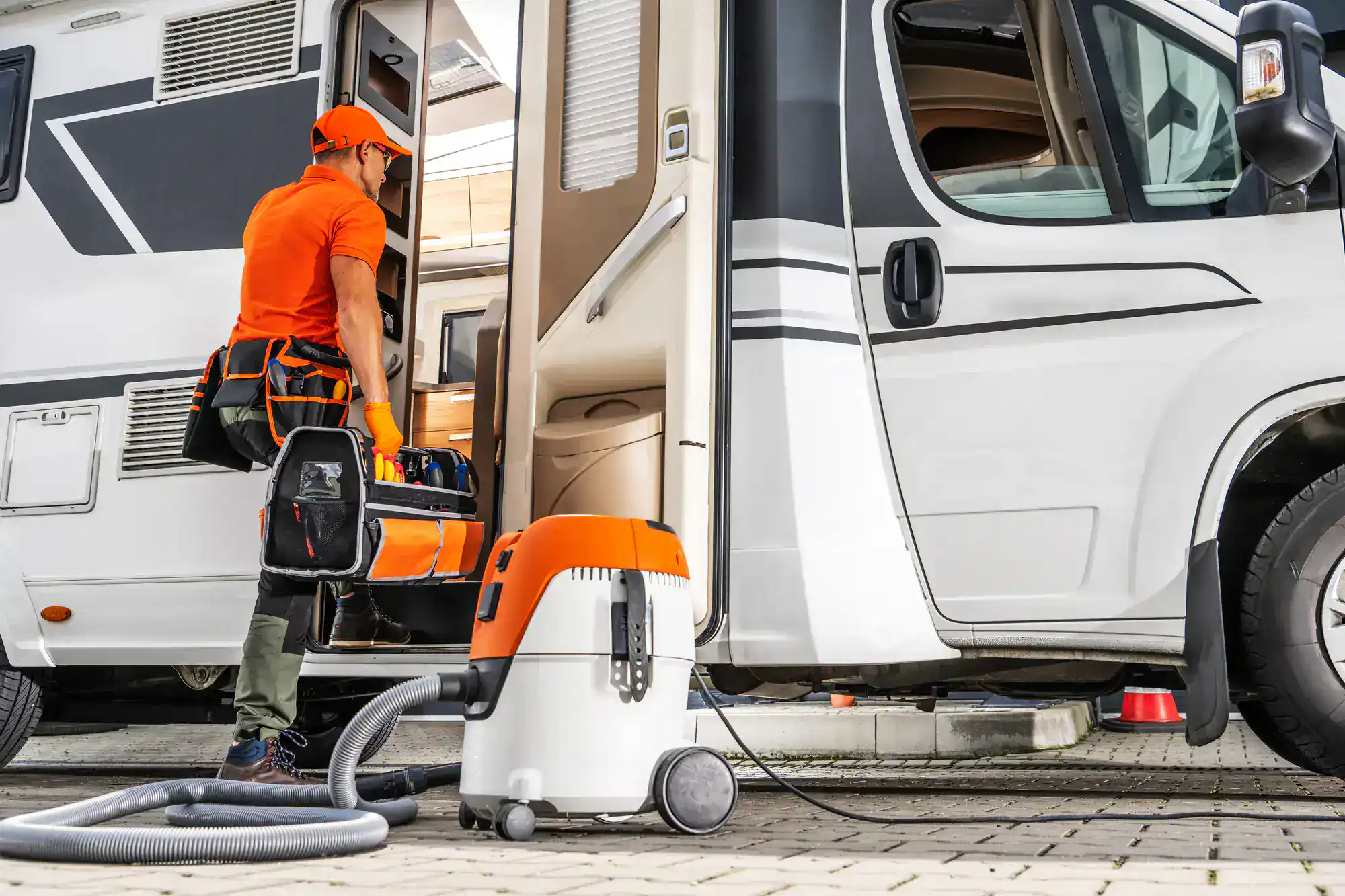
Hear from Our Customers
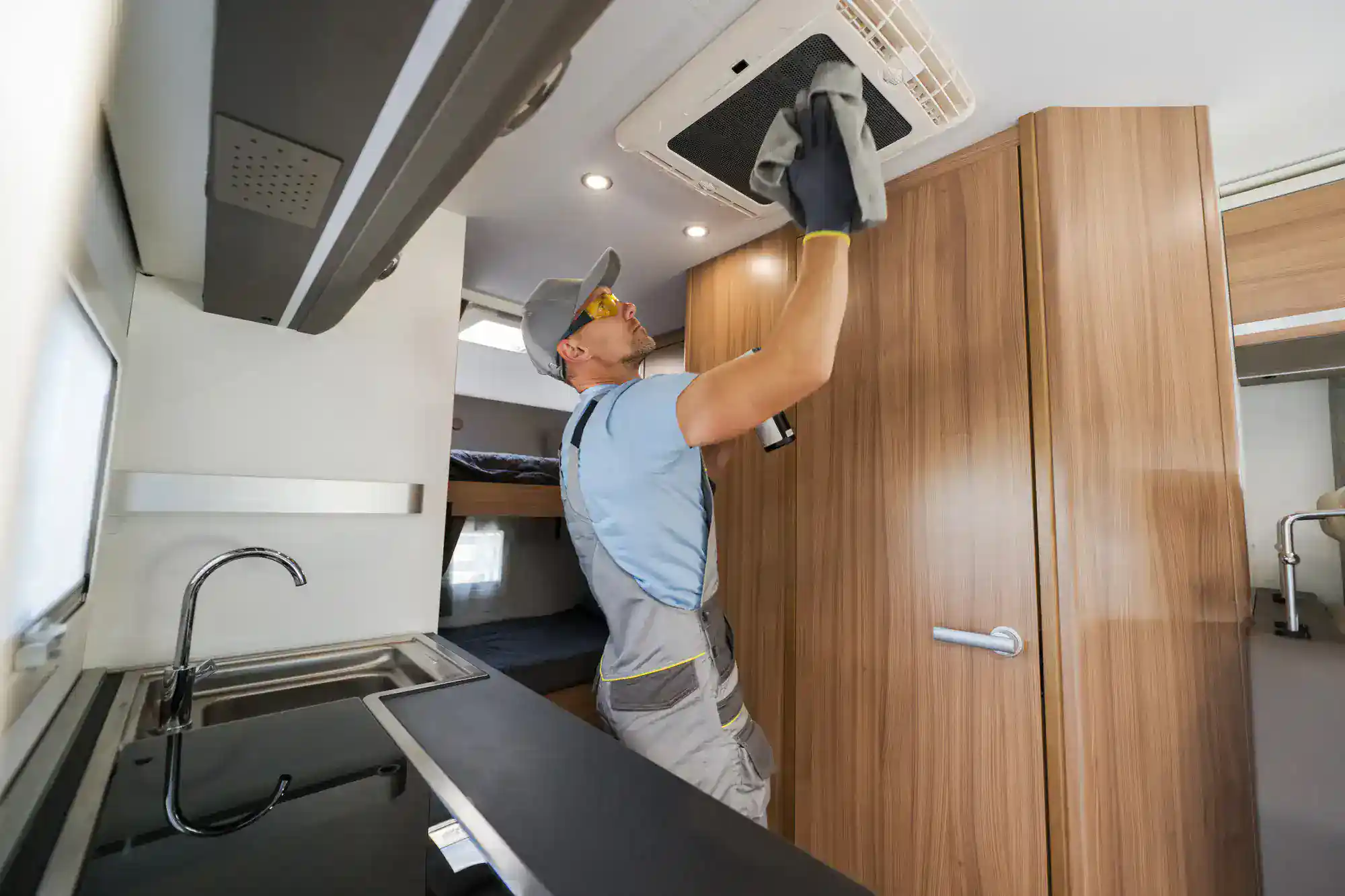
A leaking RV roof isn’t just an inconvenience—it’s a countdown to expensive interior damage. What starts as a small drip can quickly become rotted floors, moldy walls, and repair bills that rival the cost of a new RV.
When we fix your RV roof repair properly the first time, you’re looking at years of worry-free camping ahead. No more checking the weather forecast with dread. No more strategically placed buckets during rainstorms. No more wondering if that stain on your ceiling is getting bigger.
You get back to what matters: planning your next Stone Mountain State Park adventure instead of planning your next costly repair.
Stream RV isn’t some fly-by-night operation that showed up yesterday. We’re locally owned and operated in Sandy Creek, NC, which means we understand exactly what Vance County RV owners deal with—from the humidity that tests your seals to the tree branches that can puncture your roof during those trips through our wooded campgrounds.
Our certified technicians are fully licensed and insured, not because we have to be, but because you deserve that protection. When we’re working on your recreational vehicle, you’re covered if anything unexpected happens.
We’ve built our reputation one satisfied customer at a time throughout Sandy Creek, Louisburg, and Wake Forest, and that’s exactly how we plan to keep it.
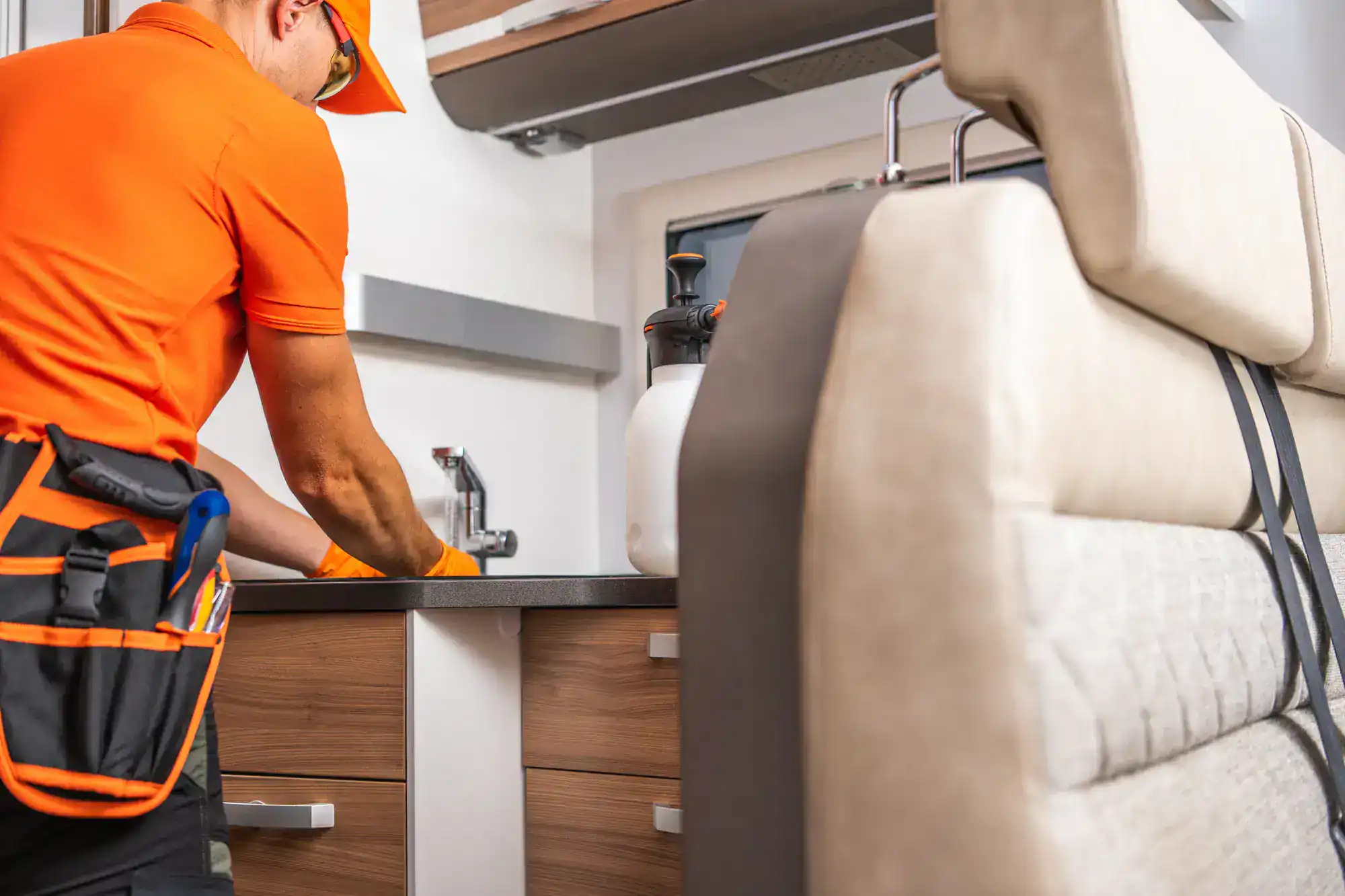
First, we’ll give you a free quote over the phone at 919-891-9577. No surprises, no hidden fees—just honest RV roof repair pricing upfront.
When we arrive at your Sandy Creek location, we start with a comprehensive roof inspection of your entire RV. We’re not just looking at the obvious problem spots. We’re checking seams, seals around vents and antennas, air conditioning units, and any areas where water might sneak in later.
Then we get to work using professional-grade materials designed specifically for recreational vehicle roofs. Whether it’s EPDM rubber roof repair, fiberglass crack sealing, or complete roof replacement, we don’t cut corners with household sealants that’ll fail in six months.
Before we leave, we’ll walk you through what we found and what we fixed. You’ll know exactly what condition your RV roof is in and what preventive maintenance to watch for in the future.
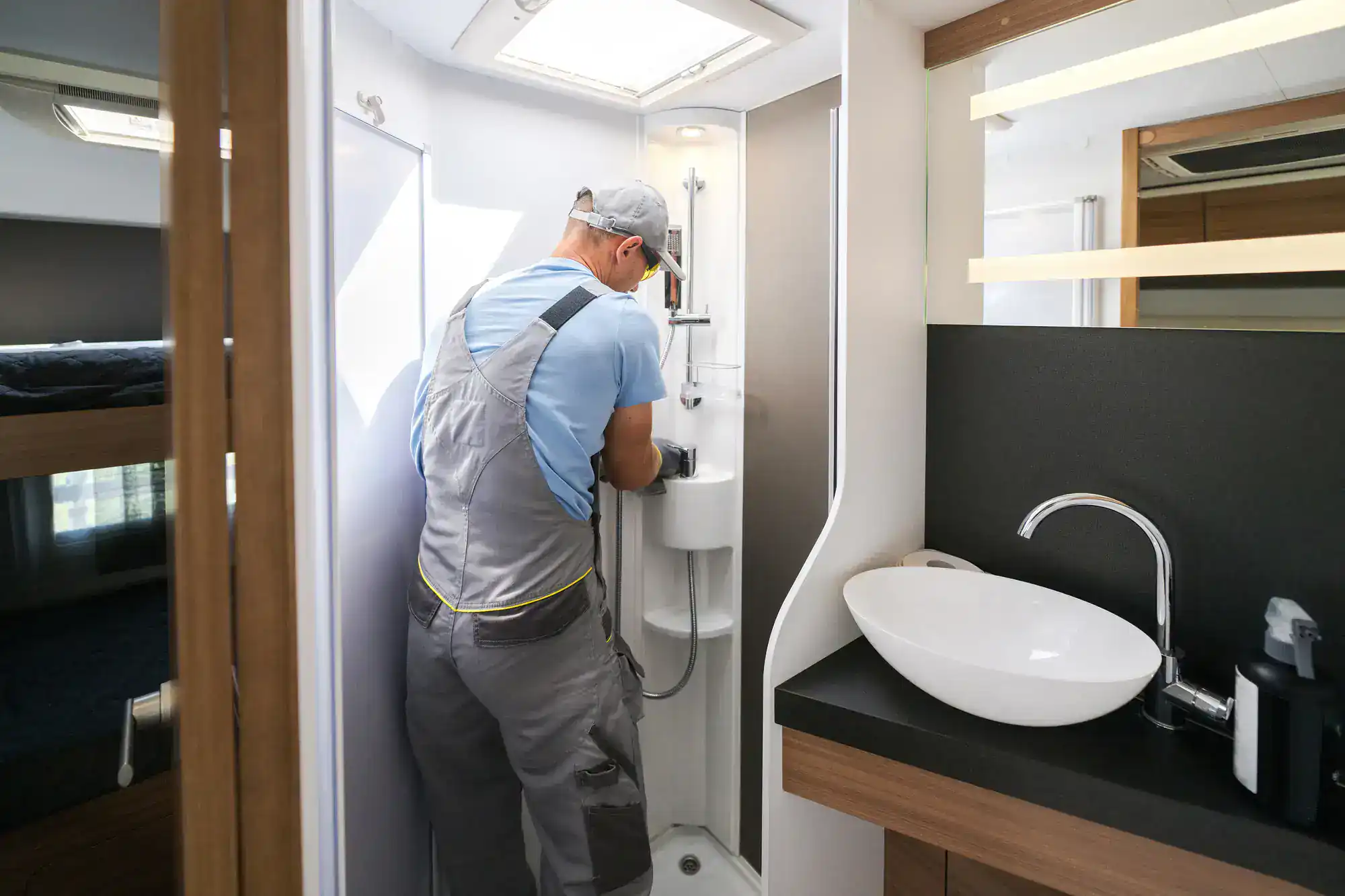
Ready to get started?
We handle every type of RV roof repair you can think of. Rubber roof patches, fiberglass crack repairs, metal roof maintenance, leak detection, and complete roof replacement—if it keeps water out of your recreational vehicle, we fix it.
Here in Sandy Creek, NC and throughout Vance County, we see a lot of damage from falling branches and intense UV exposure. That North Carolina sun is beautiful for camping, but it’s tough on RV roofing materials. We know exactly which products hold up best in our humid climate and which shortcuts to avoid.
We also catch the problems you might miss during your pre-trip inspections. That slightly soft spot near your bathroom vent? That’s not normal. Those hairline cracks around your air conditioner? They’re letting water in, even if you can’t see it yet.
The goal isn’t just to fix today’s RV roof leak—it’s to prevent next year’s emergency repair call that could cost thousands more.
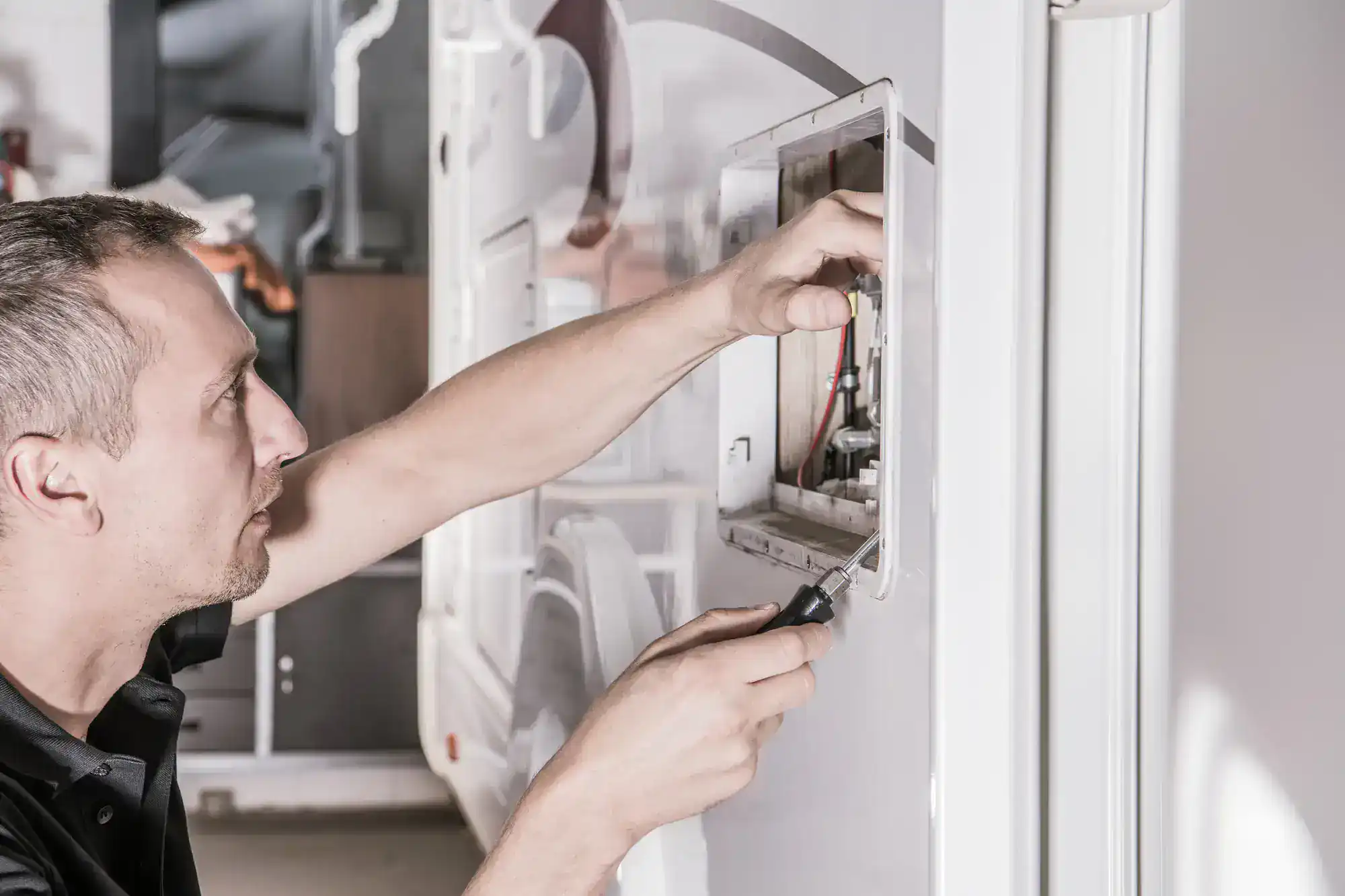
RV roof repair costs depend entirely on what we’re dealing with when we arrive. A simple patch job with quality sealant might run $100-300, while more extensive repairs involving structural damage can range from $1,000-4,000 or more.
Here’s the thing about RV roof repairs in North Carolina: catching problems early saves you serious money. That small leak you’ve been ignoring during your camping trips? It’s probably causing water damage you can’t see yet inside your walls and flooring. The longer you wait, the more expensive it gets.
We always provide a free estimate upfront for Sandy Creek residents, so you know exactly what you’re looking at before we start any work. No surprises on the final bill, and no pressure tactics.
Most standard RV roof repairs can be completed in a few hours to a full day, depending on the extent of the damage and drying time needed for sealants and patches to properly cure.
Weather plays a role in our Sandy Creek service area too. We can’t apply most roofing materials in the rain, and some professional-grade sealants need specific temperature and humidity conditions to cure properly. If we’re dealing with extensive water damage that requires interior work, that’s obviously going to take longer.
The good news is we’ll give you a realistic timeline when we assess the job at your location. We don’t make promises we can’t keep, and we don’t drag out simple repairs to inflate the bill. Most customers are back on the road within 24 hours.
We work on all the common RV roofing materials found in recreational vehicles: rubber (EPDM), fiberglass, aluminum, TPO, and modified bitumen. Each material has its own repair techniques and compatible products, which is why experience matters in the RV repair industry.
Rubber roofs are probably the most common around Sandy Creek, and they’re generally the most straightforward to repair when you know what you’re doing. Fiberglass requires different techniques and specialized materials. Aluminum roofs need special attention to prevent corrosion in our humid North Carolina climate.
The key is using the right repair method for your specific roof type and age. A patch that works perfectly on rubber might fail miserably on fiberglass. We’ve been doing RV roof repair long enough to know the difference and stock the right materials for each job.
Small touch-ups with high-quality RV roof sealant? You can probably handle that yourself if you’re comfortable getting on your roof safely. But anything involving structural damage, large tears, or extensive water damage should be left to professional RV repair technicians.
Here’s why DIY RV roof repair often backfires: RV roofs aren’t like house roofs. They flex when you drive down I-85, they expand and contract with temperature changes, and they have to deal with constant vibration. Using the wrong materials or techniques can actually make the problem worse.
Plus, if you mess up a DIY repair, you might void your RV’s warranty or create bigger problems that cost more to fix later. Sometimes the smart money is on getting your RV roof repair done right the first time by experienced professionals who guarantee their work.
At minimum, twice a year—once before camping season starts and once after. But honestly, you should be doing a quick visual check yourself every few months, especially after severe weather or trips through heavily wooded areas like those around Stone Mountain State Park.
North Carolina weather is particularly tough on RV roofing systems. We get everything from intense summer sun and humidity to ice storms, plus plenty of tree coverage that can cause branch damage during storms. Regular professional inspections catch small problems before they become expensive disasters.
Look for obvious signs like cracks in the roof material, soft spots that feel spongy when you walk on them, or areas where the sealant is pulling away from seams. If you see anything that concerns you during your inspection, give us a call at 919-891-9577. A quick professional assessment is a lot cheaper than major water damage repairs.
First, try to minimize interior damage by moving anything valuable away from the leak and setting up containers to catch dripping water. If you have emergency roof sealant or waterproof tape in your toolkit, you can apply a temporary patch from the outside—but only if it’s safe to get on the roof.
The key word here is temporary. Those emergency fixes are meant to get you through the current camping trip, not solve the RV roof problem permanently. As soon as you get back to Sandy Creek, call us for a proper professional repair.
Don’t ignore it and hope it goes away during your next trip. Water damage gets exponentially worse over time in the humid North Carolina climate, and what might be a simple $200 repair today could be a major reconstruction project costing thousands if you wait too long. We’ve seen too many RVs with extensive interior damage that started with “just a small drip.”